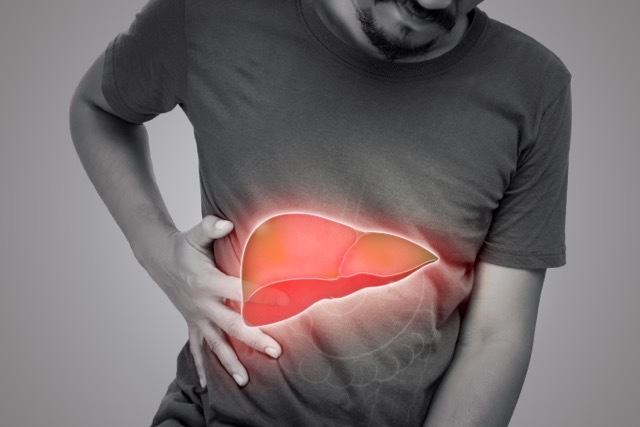
UK’s soaring liver cancer death rate blamed on alcohol and obesity
Liver cancer deaths in the UK have seen a staggering 40% increase over the past decade, making it the fastest-growing cause of cancer-related fatalities in the country, warns the British Liver Trust. Calling attention to the alarming rise, the charity is urging immediate measures to address the “carcinogenic effects” of inexpensive alcohol and unhealthy food.
Pamela Healy, CEO of the British Liver Trust, identifies alcohol and obesity as the key drivers behind the surge in liver cancer cases and deaths. She stresses the need for government intervention to combat these issues, asserting that such action can create a healthier environment for all. Healy emphasises the urgency of addressing the accessibility and affordability of unhealthy food, often priced significantly lower than nutritious alternatives.
This call for action comes amidst delays in implementing regulations that would prohibit supermarket multi-buy deals on high-fat, high-sugar, or high-salt foods. The Association of Directors of Public Health has also urged ministers to introduce minimum unit pricing on alcohol, following Scotland’s successful implementation of a minimum price of 50p per unit in 2018.
The British Liver Trust has submitted evidence to the parliamentary health and social care committee’s inquiry into future cancer care, focusing on innovative approaches to diagnosis and treatment. In addition to advocating for earlier detection and improved access to effective therapies, the charity emphasises the importance of prevention. Liver disease, a significant risk factor for liver cancer, can be reversed through lifestyle modifications, including reduced alcohol consumption and weight loss.
The submission by the British Liver Trust emphasises the need for upstream interventions to mitigate the carcinogenic impact of an unhealthy food and beverage environment. The charity cites evidence indicating that population-wide measures regulating the affordability and accessibility of alcohol and unhealthy food are more effective in reducing disease burden and addressing health inequalities than individual behaviour change alone.
The charity calls for a comprehensive alcohol strategy that tackles promotions and affordability. It highlights the fact that alcohol is classified as a group 1 carcinogen, known to cause at least seven types of cancer. Data from Cancer Research reveals that liver cancer mortality rates per 100,000 people in the UK have risen from 6.4 in 2007-2009 to 9.3 in 2017-2019. Primary liver cancer has one of the lowest survival rates among all cancers.
The British Liver Trust emphasises the need for enhanced surveillance of high-risk groups with liver disease to enable early diagnosis and improve survival rates. Additionally, the charity advocates for increased investment in liver cancer research.
The UK government is facing mounting pressure to take more effective action to combat obesity. Danone UK and Ireland, one of the country’s major food companies, recently suggested that the government should consider taxing products high in fat, sugar, or salt to tackle the obesity crisis.
In response to the inquiry, the Department of Health and Social Care affirms its commitment to diagnosing 75% of cancers at stages 1 and 2 by 2028. The department outlines its interventions, including community health liver checks for those at high risk of cirrhosis, with a particular focus on deprived communities.
A spokesperson from the Department of Health and Social Care highlights ongoing efforts to encourage healthier food and drink choices and tackle obesity. Recognising that obesity costs the NHS approximately £6.5 billion per year and is the second leading cause of cancer, the spokesperson highlights initiatives such as calorie labelling in restaurants, cafes, and takeaways to empower individuals to make informed lifestyle choices.
The spokesperson further notes that the NHS has witnessed record numbers of cancer patients in recent years, with earlier-stage diagnoses becoming more prevalent. To support this, the government is strengthening the cancer workforce and has published the first-ever Long-Term Workforce Plan, backed by over £2.4 billion, aiming to deliver the most extensive training expansion in NHS history over the next 15 years.
Read More
Is birth weight a risk factor for fatty liver disease?
A study from the University of California has found that children with a high birth weight are more likely to develop hepatitis from fatty liver disease. This is after researchers conducted a study in 530 individuals under the age of 21 who had a confirmed diagnosis of Non-Alcoholic Fatty Liver Disease (NAFLD). They collected the birth weights of the individuals and found the link. Interestingly, they also found that children with a lower birth weight were more likely to develop scarring of the liver.
NAFLD describes a spectrum of diseases that begin with fatty deposits on the liver, as this disease progresses, the liver can become fibrotic and then enters a period of cirrhosis, which means it is permanently scarred. In extreme cases this can eventually lead to liver cancer. Birthweight itself involves many factors including maternal and in utero, this is one of the first studies to identify the risks of both extremes of weight in relation to developing NAFLD in later life.
Read More
Diet and exercise improves kidney function in fatty liver patients
Non-alcoholic steatohepatitis (NASH) is characterised by excess fat in the liver that can cause inflammation and scarring. This may progress to cirrhosis and liver cancer; it can also compromise kidney function. A recent study has found that patients with confirmed NASH, who were put on a low-calorie/fat diet and participated in an exercise programme, experienced reduced liver inflammation and an improved kidney function.
These results were seen after controlling for compounding factors such as diabetes, hypertension and medications. However, the exact mechanism by which these outcomes were made is not fully understood yet. The researchers have hypothesised that oxidative stress, insulin sensitivity,inflammation, and vascular endothelial function all have roles to play. Hopefully, more research will be done in this area to fully understand the therapeutic benefits of such programs for patients with NASH.
Read More
Overweight adolescents have increased risk of liver disease
A 40-year study of 45,000 men has shown that BMI in late adolescence predicts the development of liver disease in later life. The study was performed in Sweden and was conducted in order to improve prevention programs for liver disease, by increasing our ability to predict it. The researchers noticed that whilst there has been an increase in the global prevalence of obesity, there has also been a rise in the prevalence of liver disease. It is known that the two are linked, therefore they are hoping to reduce the impact of complications caused by obesity, by improving our understanding of how to predict them.
The study took place over 40 years and included 45,000 Swedish conscripts, of which only 1% were lost to follow-up. Overall, it was shown that there was a 64% increased risk in men who were overweight in late adolescence compared to those who were a normal weight. The researchers hypothesise that this may be due to the fact that those who developed liver disease were exposed to overweight and obesity for an increased period of time. The authors of the study are hoping to further this research in the future, by gaining an understanding of the type and magnitude of risk for liver disease that overweight carries.
Read More
Fatty liver disease reversed by pill in mice
In the search for a pill to combat obesity and its associated co-morbidities, researchers have found a bile acid that is capable of preventing and treating fatty liver disease in mice. In a recent study obese and diabetic mice were fed glycine-beta muricholic acid (Gly-MCA) pills. Even with a high fat diet these mice were less fat and had less insulin resistance than the control group who weren’t given Gly-MCA.
Gly-MCA is a bile acid that can inhibit the farnesoid X receptor (FXR) which maintains metabolism by sensing and regulating bile acids, fats and glucose in the body. The receptor itself plays a complex role in the pathogenesis of metabolic dysfunction in the body and that may be why Gly-MCA had such a large effect on the obesity of the mice. Usually, bacteria break down the bile acids that inhibit FXR, however these researchers found a bacteria resistant acid, Gly-MCA, that also inhibits FXR, allowing them to conduct the study. The drug itself can be consumed in pill form for humans and provides a possible avenue for the treatment of obesity, as well as fatty liver disease. However until now there has been little research into its usage, particularly with regard to toxicity. In the mice, there were no signs of systemic, hepatic or intestinal toxicity, but more work remains to be done in order to fully explore the effects of this drug in animal models and humans.
Read More